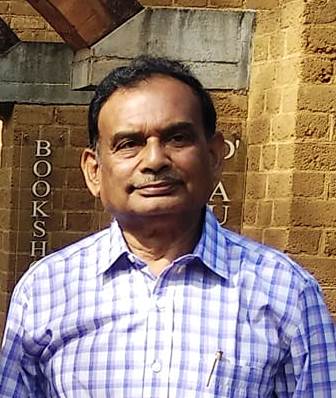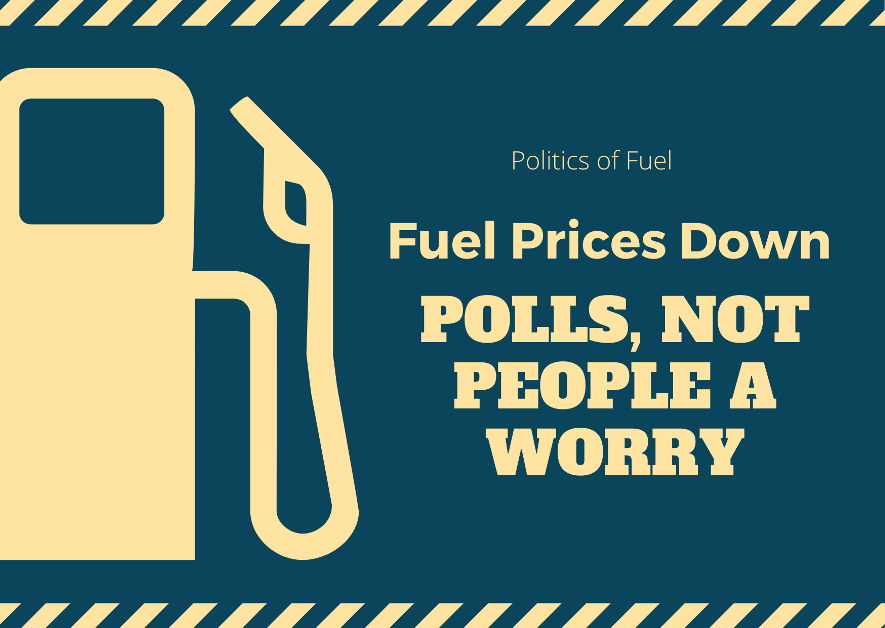Ideally, the benefits should have been passed on to the recession-hit, job-losing consumers. This could have been a sigh of relief. The high taxes on fuel have hit every individual, businesses and agriculture
 Shivaji Sarkar
Shivaji Sarkar

India is on a galloping price roller coaster. It has turned into a silent killer of the economy, forcing the country to go into a virtual policy vacuum. Worse, the people are simply tired of debating the issue this election year, as nothing seems to matter to governments.
The spiralling prices across the board are impacting production and costs of different commodities, though the producers are aware that each hike has an impact on consumption in an economy that has gone into recession with high job losses. Reserve Bank of India Governor Shaktikant Das says, “Enabling a calibrated unwinding of high indirect taxes on petrol and diesel – in a coordinated manner by centre and states – are critical to contain the further build-up of cost-pressures in the economy,” as per the minutes of the latest monetary policy meeting,
The strangest phenomenon is that except for the petrol price hike no voice is raised for a phenomenon that is thawing the economy. Or is the silent killer working through the minds and may have a volatile expression in the elections to four states and a Union Territory? It is difficult to fathom but rural distress is being felt among the poorest of the poor Ujjwala beneficiaries across the country.

According to Indian Oil, except for about 30 to 35 per cent Ujjwala gas recipients, a second refill is rare as LPG prices shot up from Rs 575 in February 2016 to Rs 794 in February 2021. This severely hits the rural women, who are largely again using smoke-spewing wood or charcoal, which the Ujjwala scheme aimed at banishing.
A policy change is necessary because high petrol price at over Rs 91 (touching Rs 100 also at many places) and diesel Rs 82 in most places for Central and State governments trying to sustain out of high excise duties, VAT and cesses on the basic price of around Rs 30. The benefit of the lowest crude prices of $19 a barrel during 2020 lockdown was never passed on to the consumers.

Despite crude prices rising since the opening of the lockdown, the prices are far lower than some years ago when the absolute peak occurred in June 2008 at $148.93 a barrel or near $120 in 2012-13. In February 2021, the OPEC basket stood at $59.58 and Brent crude at $57.97. Brent crude reached $50 in December 2020.
Ideally, the benefits should have been passed on to the recession-hit, job-losing consumers. This could have been a sigh of relief. The high taxes on fuel have hit every individual, businesses and agriculture. Diesel prices in India were kept low for its low production cost as also because it is a bellwether for the economy. The concept was to keep inflation low and help people in every aspect of life grow without any subsidy. The present pricing policy needs to be changed for faster growth and ease of life.
As per an RBI report of February 2021, every $10 a barrel increase in crude prices leads to an additional $12.5 billion deficit, roughly 43 basis points of Indian GDP. So expecting the government to pass on the entire benefit of low prices may not be the rationale. But what is being dumped on the consumers is far more than they can bear. A policy standard for linking the consumer prices to the bulk crude prices is required to stop the bleeding of the entire economy, including its base agriculture.
The fiscal deficit is rising and is likely to touch $18.48 lakh crore for a total 2021-22 budget of Rs 34.83 lakh crore or 9.5 per cent of the GDP. In reality, it would be a borrower’s economy. The fiscal deficit had breached the annual target in July 2020. It had soared to a seven-year high of 4.6 per cent of GDP in 2019-20.
This calls for national deliberation. It has become a politically scoring point but no discussion takes place on how the nation could bridge the expenditure and revenue earning gap. The high development expenses on roads, hydel or thermal power projects or race for arms industry are not trickling down.
The discussion is needed also for the reason that eight core industries output could rise by a mere 0.1 per cent in January 2021. Except for fertilizer, steel and electricity, the rest – coal, crude oil, natural gas, refinery products and cement recorded negative growth. The core sectors had expanded by 2.2 per cent in January 2020. The anaemic growth in the core also reflects that physical production has declined by 8.8 per cent for the year.
There is a linkage to the core sector growth and prices. Inflationary pressures reduce the purchasing capacity of the people causing a severe demand slump. It calls for prudent economic measures right from reducing fuel price burden on the consumers to resorting back to low diesel prices, often being opposed by ecologists supported by global petro giants for boosting their sales.
They want to do away with diesel so that a country like India increases its oil purchase by three times. The nation cannot afford such a luxury. India has to set its own swadeshi atmanirbhar course for helping its economic boom.

It also has to make its electioneering affordable for an average person. Unwise decisions are making electioneering an expensive proposition, particularly for smaller parties even though larger parties supposedly flushed with cash get the jitters too. Why not? Every party ferries crowds to meetings of their top leaders and transportation costs have shot up. Truck rentals have gone up 10-12 per cent, as fuel consists of 45 per cent of its operational cost. The cost of raw material and packaging is increasing.
The food and vegetable transportation cost rises by Re 1 a kg, jet fuel prices, 40 per cent of airlines’ costs, have surged by about 50 per cent per kl in seven months to January. Even online food firm Swiggy or Zomato are hiking payments to absorb the increased cost of fuel. After the spectrum sale at Rs 77147 crore, phone connectivity will also be expensive adding to the prices in every segment.
Prices are a priority issue. The rupee has been hit too. A review of the policies is needed to lead the country towards Prime Minister Narendra Modi’s goal of a $5 trillion economy. But a high cost economy could be a hiccup. —(INFA)





